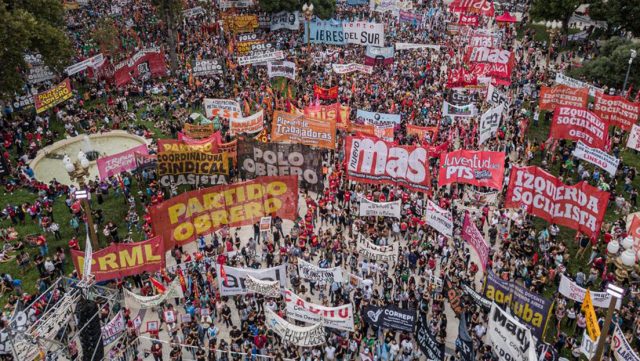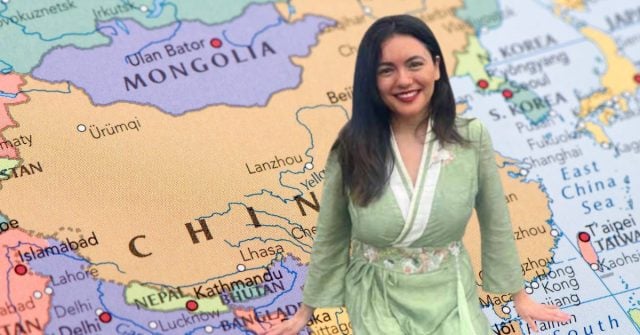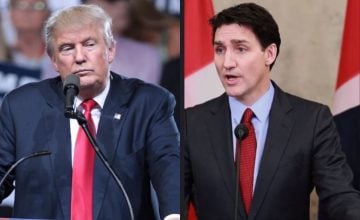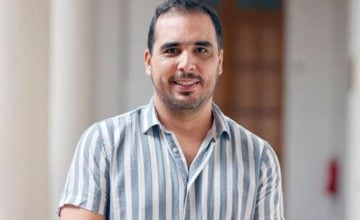With the poor results obtained by the Peronist government in Argentina during the last voting process, in addition to the strengthening of the right and the emergence of some extreme right candidates in certain cities, at a national level the left is positioning itself as the third force in the country. It is the revelation of the electoral process that Argentina has just lived, although it is going unnoticed.
The recent Simultaneous and Mandatory Open Primary elections (PASO) did not define new public officials, but it did establish which political fronts will be able to compete in the November 14 legislative elections. They also serve as a survey, much more reliable than the work of opinion consultants, to reliably know how the popularity of the political parties is, explains Leandro Lutzky in a report for RT.
In that electoral process, the Frente de Izquierda y de los Trabajadores (Left and Workers’ Front – FIT), which brings together several groups, managed to finish third or fourth in many jurisdictions. The great «surprise» took place in the province of Jujuy, a territory with an indigenous majority in the extreme north of the country, where 23% of the votes were obtained.
What is the reason for the rise of this movement, often divided into small parties? And what does all this entail?
«Escape from the most progressive options»
«The left has had, at least, a triple composition to be able to explain its increase in this election», explains the political scientist Mario Riorda.
For the academic, there was «an angry vote, as almost always happens with the left in intermediate legislative elections». There was also «an anti-system vote, which could correspond to the same logic that nourishes the libertarian right».
In any case, the expert in electoral strategies affirms that the increase in votes is mainly due to the dramatic drop in acceptance that the Alberto Fernández government had at the beginning: “Much of the composition of the current vote has to do with a leakage of the most progressive options. What the Frente de Todos had reaped in 2019, it did not retain it in this opportunity».
But will the left be able to repeat the result of the PASO in the November vote? That is, in an election that will define legislative positions. «I don’t think there are going to be any abrupt shifts», replies Riorda.
“Of course, third, fourth and fifth force victories almost always occur with discrete differences or margins. Therefore, they can go up or down», he adds. However, for the specialist «it will not be significant either». In this regard, he adds that «in the national scenario there is a relative stability of the votes, which is obviously sustained via the first poll data, which must be confirmed with the results of the elections».
What can you expect in Argentina’s executive elections?
Beyond the good result that can be obtained in the mid-term vote, the truth is that the FIT could get, at most, four or five seats of the 127 that are in dispute at the national level. This is explained because, even with a large federal presence, there are few places available in each jurisdiction.
In total, the Chamber of Deputies has 257 seats, and currently only two are red, being a very minority coalition in Congress. In this South American country, the campus is practically divided into two groups: Juntos por el Cambio (Together for Change), closer to former President Mauricio Macri, and the ruling party, linked to Cristina Kirchner. There are also other small fronts, which tend to bend towards the dominant alliances.
Therefore, the question is whether, considering this unprecedented electoral growth, the left can be sustained as a serious alternative for voters facing the 2023 presidential elections. That is, can it finally aspire to governance positions, in addition to adding some seats in the Legislative Branch.
The upturns of the left in midterm elections are frequent. Many citizens feel that a ‘workers voice’ is necessary in congress to wage certain struggles, but later, they do not entrust their vote to them so as to lead the reins of the country, the province, their city or the commune.
«It is something characteristic, its growth in the intermediate legislatures, regardless of a much lower or discrete performance when the elections are of the executive type», says Riorda. It remains to be seen whether the trend reverses in the coming years.
In general, the Argentine left has had little influence on the national political agenda. After leaning towards the guerrilla movements of the 70s, the piquetero groups of the 90s and of the beginning of the 2000s, in recent times many leaders and militants have tried to consolidate themselves with an electoral platform. To date, the FIT is the strongest front that has been formed. And it has never been as strong as now.
Likewise, the expert explains why it is difficult for this kind of movements in Argentina to reach administrative positions: «It is quite plausible, and even frequent, to affirm that the more radicalized political parties are, the further away they are from the chances of being voted in executive elections. In part, there is a bit of truth to that”, he says.
«Generally, the structures or offers of the ‘movement’ type of front, and obviously the Frente de Todos [Peronism] is, from the center to the left, capture a large part of the vote», explained Riorda.»That also explains a poor electoral performance of the left, which in part is already included in the coalition offer», he concludes
For now, step by step. The objective of the FIT, in the short term, is to have a presence in Congress, and afterwards, perhaps, it can dream of going further.











